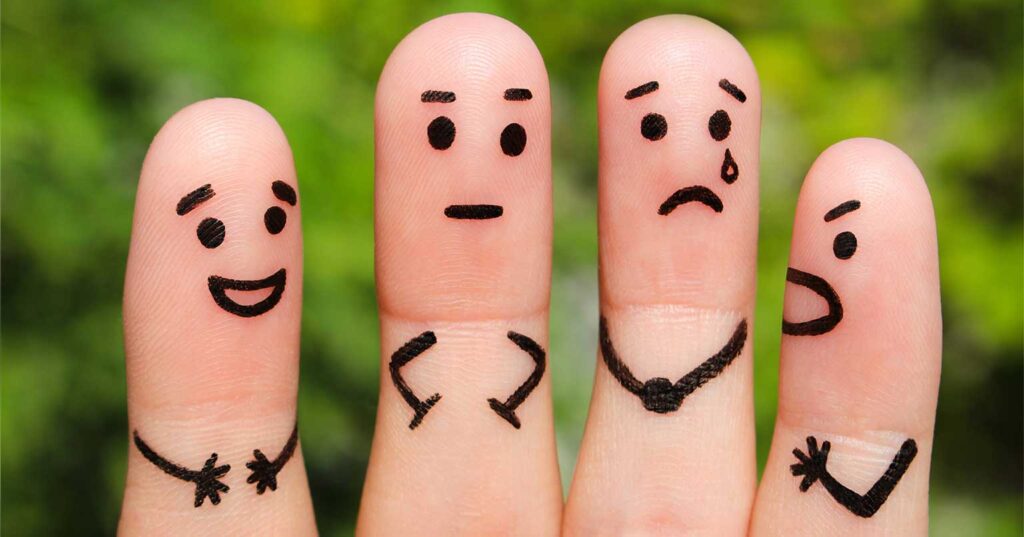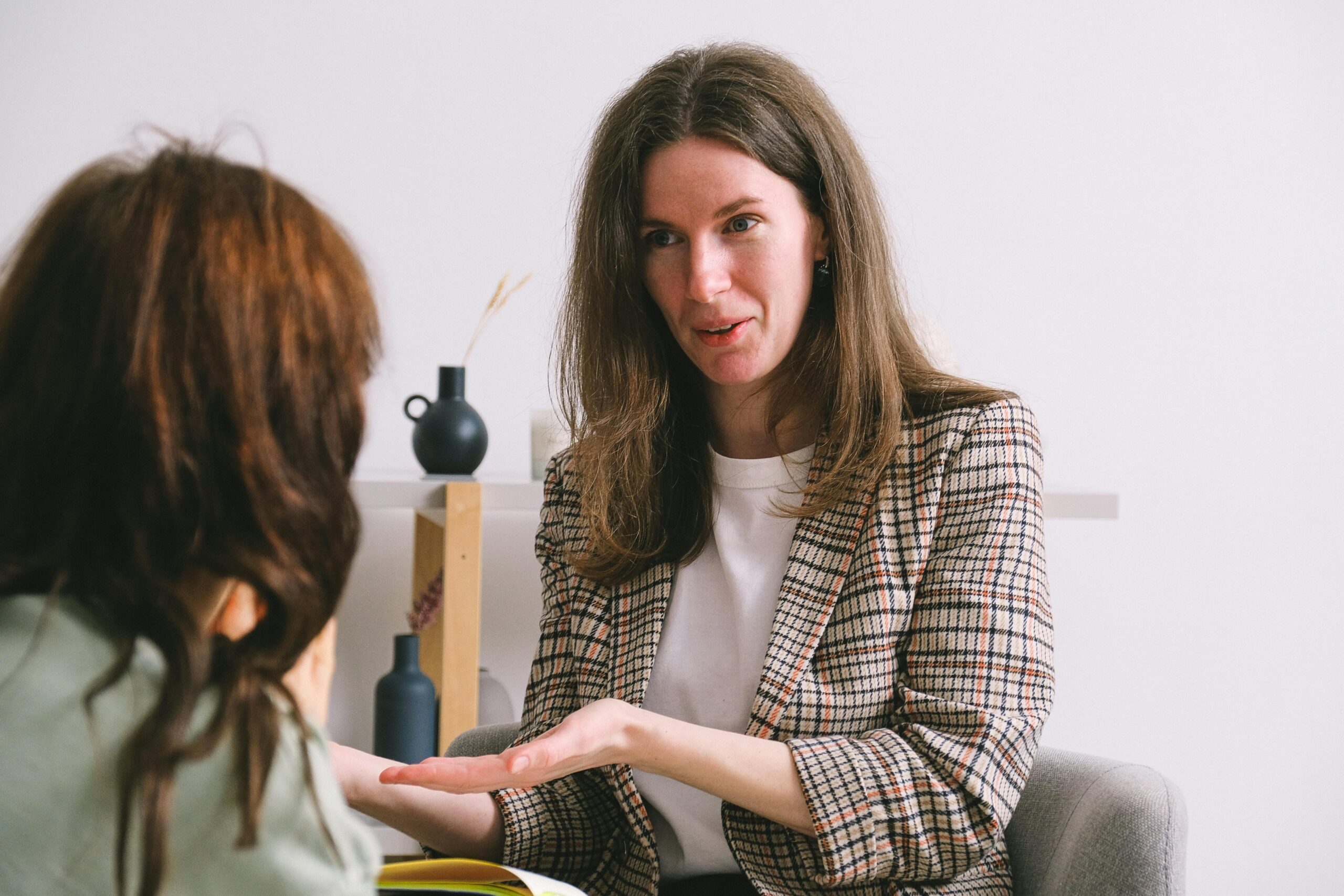It’s not always easy to put your finger on what feels off. Maybe you’ve been feeling disconnected, overwhelmed, or emotionally numb. You might have energy one day and crash the next. Or maybe you’re going through the motions, but everything feels heavy and distant. You know something isn’t right, but you’re not sure what to call it.
You’re not alone. Depression doesn’t always look the same from person to person, and different types can impact how it shows up in your life. Understanding these distinctions can guide you toward more personalized care.
At Friendly Recovery Center, we help individuals get the clarity they need to begin healing with personalized mental health care. For many people, the missing piece isn’t more effort or willpower. It’s clarity.
Why Understanding Your Depression Type Matters
Not all depression is the same. Depression is a mood disorder that can affect how you think, feel, and function, but not all depression looks or feels the same. According to the National Institute of Mental Health, depression can cause severe symptoms that interfere with daily life, including sleep, eating, and work.
Knowing the specific type you’re dealing with can make a big difference when it comes to finding the right treatment and support. Each diagnosis has its own set of symptoms, patterns, and recommended therapies.
What Are the Different Types of Depression?
Here’s a quick overview:
- Major Depressive Disorder (MDD)
- Persistent Depressive Disorder (Dysthymia)
- Bipolar Depression
- Seasonal Affective Disorder (SAD)
- Postpartum Depression
Recognizing these categories can help make sense of your experiences and open the door to more targeted, effective care.
Signs You Might Be Experiencing Depression
Common Emotional and Physical Symptoms
Depression can affect your mind and body in ways that are hard to ignore but easy to misunderstand. Some of the most common symptoms include:
- Persistent sadness or hopelessness
- Loss of interest in hobbies or social activities
- Difficulty concentrating
- Fatigue or low energy
- Changes in appetite or sleep
- Feelings of worthlessness or guilt
- Physical aches or pains without a clear cause
When It Might Be More Than Just a “Low Mood”
Everyone feels down sometimes, but when these symptoms last for weeks or interfere with your daily life, it could be a sign of clinical depression. The duration, severity, and overall impact on functioning are what often set a depressive disorder apart from a passing emotional slump.
Major Depressive Disorder (MDD)
Major Depressive Disorder is one of the most commonly diagnosed forms of depression. It involves intense symptoms that last at least two weeks and significantly interfere with your ability to function in everyday life.
According to the National Library of Medicine, MDD is diagnosed when an individual experiences:
- Deep sadness or emptiness
- Loss of motivation
- Changes in sleep or appetite
- Difficulty concentrating
- Suicidal thoughts or feelings
These symptoms often feel unshakable, even if there’s no clear reason for them. MDD can appear suddenly or develop gradually, and it often requires a combination of therapy and, in some cases, medication to manage effectively.
Persistent Depressive Disorder (Dysthymia)
What is the difference between MDD and Dysthymia?
MDD typically involves more intense episodes that come in waves, while Dysthymia involves a milder but long-lasting sense of sadness or disconnection that continues for two years or more.
You might feel like you’re functioning while going to work or taking care of responsibilities, but everything feels dull, muted, or emotionally flat. Many people with Dysthymia describe it as feeling like something is always just a little bit off, even on good days. According to MedlinePlus, symptoms tend to be less severe but longer-lasting than MDD, which makes them easier to overlook. Because it lasts so long, this kind of depression can be hard to recognize without professional help.
Bipolar Depression
Bipolar depression includes episodes of depression, but it’s not the same as unipolar depression. The depressive episodes can look similar to MDD, but they occur alongside periods of elevated mood known as mania or hypomania.
Understanding Bipolar I vs. Bipolar II
- Bipolar I includes full manic episodes that may involve impulsive decisions, rapid speech, or even hospitalization.
- Bipolar II features hypomanic episodes that are less extreme but still noticeable, combined with longer and more frequent depressive episodes.
Many people first seek help during the depressive phase and are mistakenly diagnosed with unipolar depression. Identifying bipolar disorder early is key to ensuring the right type of treatment that addresses both depressive and manic symptoms.
Seasonal Affective Disorder (SAD)
Some people notice their depression follows a seasonal pattern. If your symptoms tend to show up in the fall or winter and fade in the spring or summer, you may be dealing with Seasonal Affective Disorder.
What are the symptoms of seasonal depression?
- Low energy or increased sleep
- Social withdrawal
- Weight gain or carb cravings
- Feeling down most of the day
SAD is linked to changes in sunlight exposure and can often be treated with light therapy, structured routines, and therapy focused on managing cyclical mood changes. The American Psychiatric Association notes that bright light therapy is effective for people with seasonal depression and may also benefit those with other mood disorders worsened by seasonal changes.
Postpartum Depression
Bringing a child into the world is a major life transition, and it’s normal to experience emotional ups and downs. But when sadness, anxiety, or detachment persist beyond the first few weeks after childbirth, it could be postpartum depression.
This form of depression affects women after pregnancy and can include:
- Severe mood swings
- Exhaustion and hopelessness
- Difficulty bonding with the baby
- Intrusive thoughts or fears
The Office on Women’s Health emphasizes that if emotional symptoms persist beyond a couple of weeks after childbirth, it may be more than just “baby blues.” Postpartum depression is a medical condition that can be treated with therapy, medication, and support. For women who need a deeper level of care, Friendly Recovery Center offers a dedicated women’s program designed to meet the unique mental health needs of women during life transitions like pregnancy and postpartum recovery.
Why You Shouldn’t Self-Diagnose Depression
It’s tempting to search online and try to match your symptoms to a diagnosis, but depression can be complex. Many types overlap, and other mental health issues like anxiety, PTSD, or even certain physical conditions can mimic depression. A professional diagnosis helps differentiate between them.
Understanding how symptoms overlap, especially when anxiety and mood disorders overlap, can help ensure you receive an accurate diagnosis and appropriate care that reflects your experience.
How Friendly Recovery Center Helps You Find Answers
Personalized Depression Screening and Diagnosis
Our compassionate clinical team takes the time to understand your full mental health picture. Through careful assessment and one-on-one discussions, we work with you to identify the specific type of depression you may be experiencing.
Treatment Plans Tailored to Your Needs
Friendly’s outpatient programs combine evidence-based therapies and holistic practices to support lasting change. These include:
- Cognitive Behavioral Therapy (CBT) to help reframe negative thinking
- Dialectical Behavior Therapy (DBT) for building emotional regulation skills
- Process group therapy to foster peer connection and insight
- Holistic therapy approach to support the whole person, not just symptoms
- Mindfulness-based practices to encourage calm and present-moment awareness
Outpatient Options That Work with Your Life
Friendly Recovery Center offers flexible, structured treatment options to meet you where you are. These include:
- Partial Hospitalization Program (PHP) for structured daytime support
- Intensive Outpatient Program (IOP) to balance care and independence
- Outpatient Program (OP) for continued therapy and flexibility
- Telehealth mental health treatment for accessible, remote support
Gender-specific care is also available through our women’s program and men’s program, offering support tailored to the unique experiences of each individual, whether related to identity, family roles, or past experiences.
Learning more about how outpatient treatment can help prevent a mental health crisis may provide valuable insight into how timely care can reduce long-term struggles and support early recovery.
Support Is Closer Than You Think
Depression can be confusing and isolating, especially when you don’t know what you’re dealing with. At Friendly Recovery Center, we’re here to help you get answers and find a path forward with care that’s built around you.
Call us today at +1 (949) 776-4156 or reach out to start your personalized mental health journey. You don’t have to navigate this alone.
FAQ
What are the main types of depression?
- Major Depressive Disorder (MDD)
- Persistent Depressive Disorder (Dysthymia)
- Bipolar Depression
- Seasonal Affective Disorder (SAD)
- Postpartum Depression
How can I tell what type of depression I have?
A clinical assessment is the most reliable way to understand what kind of depression you’re experiencing. Self-diagnosis can miss overlapping symptoms or conditions like anxiety or bipolar disorder.
Is it possible to have more than one type of depression?
Yes, you can experience more than one form of depression or have depression alongside other mental health challenges. A comprehensive diagnosis ensures nothing is overlooked.
Can depression look different in men and women?
Yes. Men often show more irritability or substance use, while women may experience sadness, fatigue, or feelings of guilt. Friendly’s gender-specific programs address these differences.
What kind of treatment works best for each depression type?
- MDD: CBT, medication, group therapy
- Dysthymia: Long-term therapy, lifestyle changes
- Bipolar Depression: Mood stabilizers, DBT
- SAD: Light therapy, behavioral activation
- Postpartum Depression: Supportive therapy, medication, family involvement








